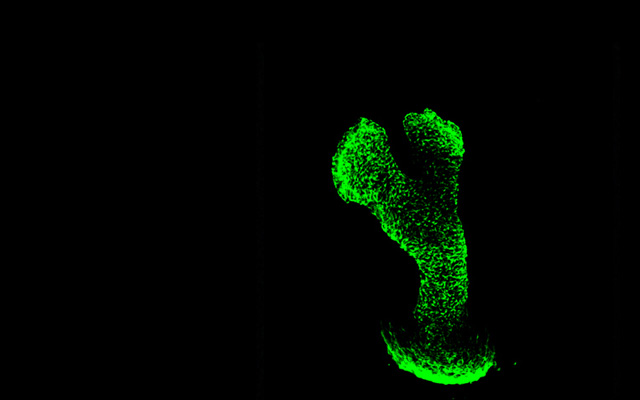Effect of Nobiletin on Fracture Healing in Traumatic Fracture Rats
HUANG Zheng, DENG Mingtao*, YE Dandan
This article aims to investigate whether nobiletin affects bone healing in traumatic fractures in rats by regulating HIF-1α (hypoxia-inducible factor-1α)/SDF-1 (stromal cell derived factor 1)/CXCR4 (C-X-C chemokine receptor 4). The model of traumatic fracture in rats was established. After modeling, the rats were randomly divided into model group, a low-dose nobiletin (10 mg/kg) group, a high-dose nobiletin (30 mg/kg) group, and a high dose nobiletin+PX-478 (30 mg/kg NOB+5 mg/kg PX-478) group. Additionally, 12 rats were included as the control group. After drug intervention, samples were taken and microcomputed tomography was used to detect the density and thickness of rat bone trabeculae and bone volume fraction. Saffron O-green staining was applied to observe the pathological changes in the surrounding cartilage tissue of rats. ELISA method was applied to detect the levels of BGP (osteocalcin), ALP (alkaline phosphatase), IL-6 (interleukin-6), and TNF-α (tumor necrosis factor-α) in rat serum. QPCR was applied to detect the mRNA levels of HIF-1α, SDF-1, and CXCR4 in rat femoral tissue. Western blot was applied to detect the expression levels of HIF-1α, SDF-1, and CXCR4 proteins in rat femoral tissue. Rat osteoblasts were separated and divided into blank group, low and high concentration nobiletin groups (10, 20 μmol/L) and high concentration nobiletin+PQ-478 group (20 μmol/L+25 μmol/L PQ-478). BCIP/NBT ALP staining kit was used to de tect the ALP activity of osteoblasts, and ELISA was used to detect the levels of COL-I and PCNA (proliferating cell nuclear antigen) of osteoblasts. The expression levels of HIF-1α, SDF-1 and CXCR4 in osteoblasts were detected by qPCR and Western blot. Results show that there were no abnormal changes in the peripheral cartilage tissue of rats in the control group, while the peripheral cartilage tissue of the model group rats was severely damaged, the density and thickness of bone trabeculae, bone volume fraction, and the levels of BGP and ALP in serum were greatly lower (P<0.05), the levels of IL-6 and TNF-α were greatly higher (P<0.05), the mRNA and protein levels of HIF-1α, SDF 1, and CXCR4 in femoral tissue were greatly lower (P<0.05). Compared with the model group, the nobiletin groups showed improvement in the pathological damage of peripheral cartilage tissue in rats, the density and thickness of bone trabeculae, bone volume fraction, and the levels of BGP and ALP in serum were greatly higher (P<0.05), the lev els of IL-6 and TNF-α were greatly lower (P<0.05), the mRNA and protein levels of HIF-1α, SDF-1, and CXCR4 in femoral tissue were greatly higher (P<0.05), and the high-dose nobiletin group had a stronger effect (P<0.05). HIF-1α inhibitor PX-478 could reverse the therapeutic effect of nobiletin on traumatic fracture rats (P<0.05). Compared with blank group, PCNA, ALP and COL-I levels, HIF-1α, SDF-1 and CXCR4 mRNA levels and protein levels of bone cells with low and high concentration of cephala were significantly increased (P<0.05). The levels of PCNA, ALP, COL I, HIF-1α, SDF-1 and CXCR4 mRNA and protein in bone cells composed of high concentration of cedrin+PX-478 were significantly decreased compared with cedrin high concentration group (P<0.05). The above results indicate that nobiletin may alleviate pathological damage and inflammatory response in rats with traumatic fractures and promote fracture healing by activating the HIF-1α/SDF-1/CXCR4 signaling pathway.




 CN
CN EN
EN